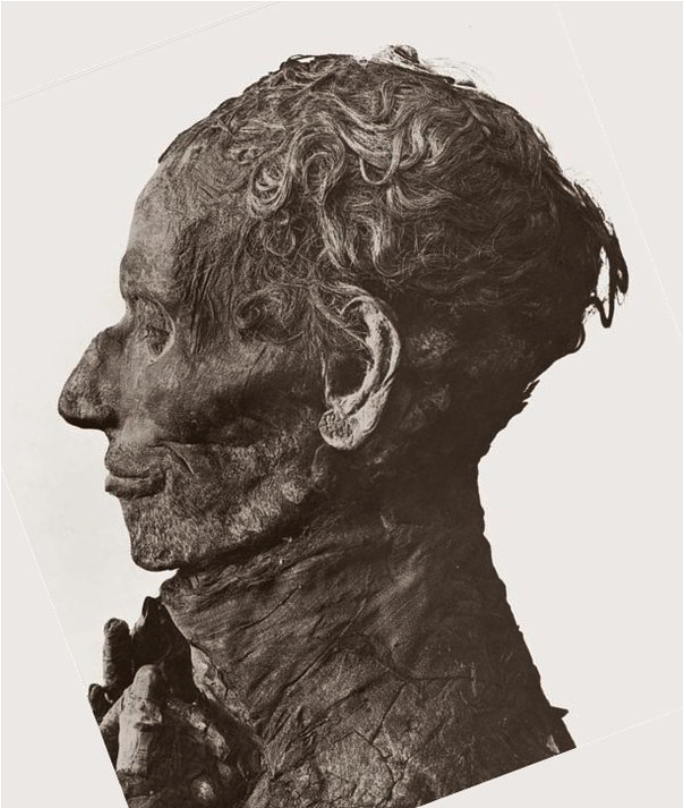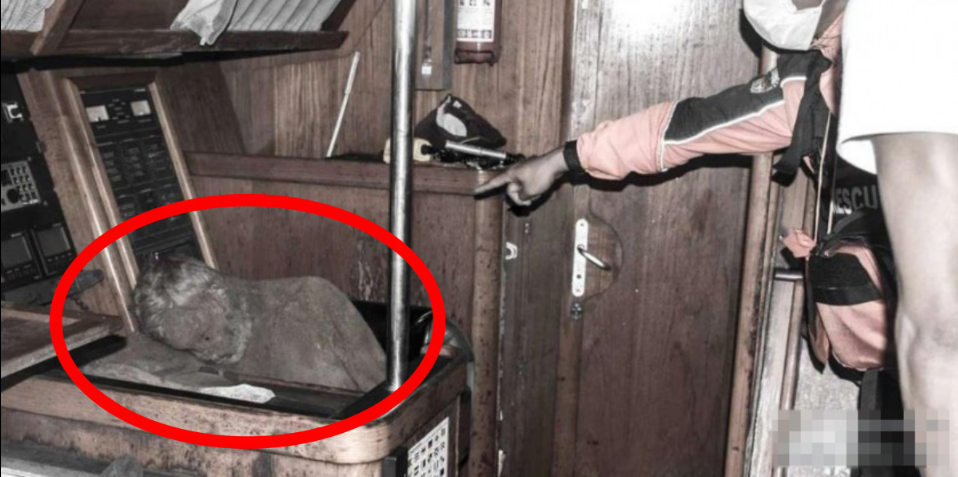
Yuya, Father Of Queen Tiye, Great-Grandfather Of Pharaoh Tutankhamun. Y-DNA G2a, MtDNA K – Gad Et Al. 2020 Possibly Of Mitanni Or Oth…
Thuya mummy.
She was the mother of Queen Tiye, grandmother of Akhenaten and great-grandmother of Tutankhamun. About 3400 years ago she died at 50 years old.
Yuya, father of queen Tiye, great-grandfather of pharaoh Tutankhamun.

Y-DNA G2a, mtDNA K
– Gad et al. 2020
Possibly of Mitanni or other Indo-European origin:

“The Biographical Dictionary of Ancient Egypt suggests a foreign origin [for Yuya]. “it is conceivable that he had some Mitannian ancestry, since it is known that knowledge of horses and chariotry was introduced into Egypt from the northern lands and Yuya was the king’s ‘Master of the Horse’.” It also discusses the possibility that Yuya was the brother of queen Mutemwiya, who was the mother of Pharaoh Amenhotep III and may have had Mitannian royal origins.”
– Yuya
His Y-DNA is possibly G2a-L140, as this lineage has been found in ancient samples from Nubia. G2a-L140 is a lineage associated with Indo-Aryans so could be a Mitanni lineage, as the Mitanni rulers were Indo-Aryans:
“some subclades of G2a-L140 are found uniformly throughout Europe, even in Scandinavia and Russia, where Neolithic farmers had only a minor impact. More importantly, G2a-L140 and its subclades are also found in the Caucasus, Central Asia and throughout India, especially among the upper castes, who represent the descendants of the Bronze Age Indo-European invaders. The combined presence of G2a-L140 across Europe and India is a very strong argument in favour of an Indo-European dispersal.”

– Haplogroup G2a (Y-DNA)
Nubian samples from the Christian period:
– Sirak et al. 2021, Supplementary Information
European mtDNA found in the Nubian samples:

“Here we present genome-wide data from 66 individuals who lived at Kulubnarti, located approximately 130 kilometers south of Sudan’s present-day border with Egypt, during the earlier part of the Christian Period (~650-1000 CE). (…) Thirteen individuals from both cemeteries belong to H2a, a European-centered mtDNA haplogroup not previously found in ancient contexts in Africa to our knowledge. … Ten individuals from both cemeteries belong to mtDNA haplogroup U5b2b5 [of European origin], though they also exhibit three additional mutations not typically found in members of this haplogroup. One of these mutations was detected in a 4,000-year-old mummy from Deir el-Bersha, Egypt also assigned to this haplogroup, raising the possibility that the presence of U5b2b5 at Kulubnarti reflects deep connections with Egypt; other mtDNA haplogroups, including J2a2e, R0a1, T1a7, U1a1, and U3b are also found both at Kulubnarti and in ancient Egyptians.”
– Sirak et al. 2021
Amenhotep III (husband of queen Tiye) had Y-DNA R1b and mtDNA H2b. (Gad et al. 2020)
H2b is an Indo-Aryan lineage, supporting the idea that Amenhotep’s mother (Mutemwiya) was a Mitanni princess.
– Mutemwiya

in the Armarna Letters the Mitanni king Tushratta refers to the Egyptian pharaoh (Amenhotep III or Akhenaten) as his brother and son-in-law.
– Amarna letter EA 19 , Amarna letter EA 23
mtDNA H2/ H2a/ H2b:
“With a Late Glacial age estimate of 14 ka, H2 most likely originated in Eastern Europe or the Caucasus and is divided into three main branches: H2a (c.11 ka), H2b and H2c (both c.8ka ka, respectively). … a H2a1 lineage (has been recovered) from the Russian Steppe Eneolithic, dating to earlier than 6 ka, with other H2a1 lineages from the Armenian Chalcolithic and Ukrainian Eneolithic dating to c.6 ka. A basal H2 was also found in the Russian Steppe Eneolithic. H2a is by far the largest and most complex branch, comprising 95% of the modern H2 mitogenome sequences in our dataset. After 5 ka, H2a appears in the Corded Ware in Poland and in the Bell Beaker culture of Germany, reaching western Europe with the Copper or Bronze Age at 4ka. Additional sequences of H2a have been retrieved from Bronze and Iron Age individuals from the Pontic-Caspian steppe. This earlier H2/H2a seems to be distributed around the Black Sea, before being dispersed from the Steppe with the Yamnaya pastoralist expansions across northern Europe.

H2b, on the other hand, is a minor branch. It contains several ancient samples from Russia, all basal to the rest of the branch, including one individual from the Yamnaya culture and one from the Late Bronze Age Srubnaya culture, both from the Pontic-Caspian Steppe region, and five other Bronze Age samples from east of the Volga river: three from Sintashta and two from Krasnoyarsk. Also in a basal position, there are three modern Russian samples (two from the Altai region) and one Danish sequence.

Interestingly, while the vast majority (70%) of H2 modern sequences in our dataset are of European origin, H2b displays a strong South Asian component, with seven samples from Pakistan, India and Sri Lanka. The newly published Sintashta and Middle Bronze Age Krasnoyarsk (Russian) sequences (Narasimhan et al. 2018), together with the previously released Yamnaya and Srubnaya, span a period from c.5 to 3.5 ka. These, plus the modern South Asian sequences, support our earlier suggestion that H2b was involved in movements east and southwards from the Pontic-Caspian region into South Asia (Silva et al. 2017), by documenting its progress eastwards across the Eurasian Steppe. The Sintashta Culture in the Ural Mountains, or a “Sintashta-derived” culture (such as the Andronovo), is thought to have expanded eastwards into Central Asia c.3.8 ka, reaching South Asia within several hundred years (Gimbutas 1963; Anthony et al. 1986) and, based on linguistic and archaeological evidence, they are thought to have been responsible for spreading the Indo-European language family across Central and South Asia (Parpola 2015).”
Ginger/blonde hair possibly due to mummification:
Amenhotep II (2) mummy:
Tuthmoses IV mummy:




